Staining or painting treated wood
We often get the question: is it possible to paint treated wood? The answer is yes, but there are some important things to consider for a long-term result.
If you want to paint impregnated or treated wood, make sure to choose for a durable product that can “breathe”. Treated wood can shrink and expand under the influence of weather circumstances. Also, the impregnating agent will gradually seep out of the wood when the wood is placed outdoors.
Therefore, a good paint for treated wood must be vapour permeable and must not form a sealing coat on top of the wood. Moose F meets all requirements for painting treated wood.
- Suitable for all types of treated wood
- Vapour-permeable and preservative
- Ideal for impregnated garden houses, fences and wooden facades
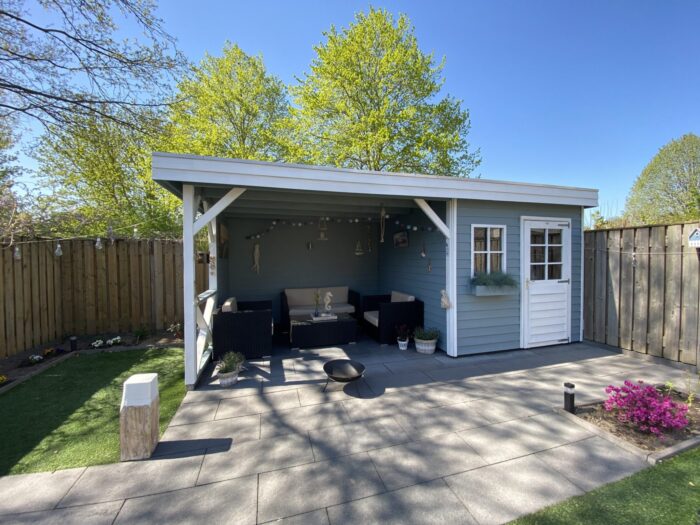
Want to order paint for treated wood directly?
Step-by-step plan and advice: painting impregnated or treated wood
Are you going to paint an impregnated garden shed or paint an treated fence? The tips below will give you results that you will enjoy for a very long time.
1. Allow freshly treated wood to “sweat” for a while
With freshly impregnated lumber, it is wise to let the wood breathe and “sweat” first. Absolutely do not use paint or varnish that completely seals the wood, but choose a moisture-regulating product that ensures that substances inside of the wood can still seep out. This prevents your paint from flaking.
The advantage of Moose F paint is that it soaks into the wood like a stain. If desired, this allows you to apply the first layer directly on the impregnated wood. The salts and excess moisture can still seep through the first paint layer. It is wise to apply the second layer only when the treated wood has fully “sweated out”, which is after a few months to about a year. You can then safely paint your impregnated wood with Moose F. Moose F does not seal the wood, but creates an open structure. Any excess impregnating agent can still seep out of the wood, instead of building up underneath the paint layer.
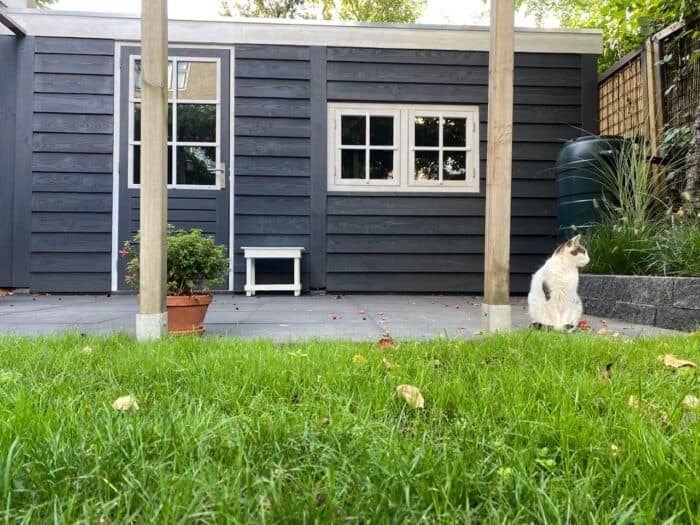
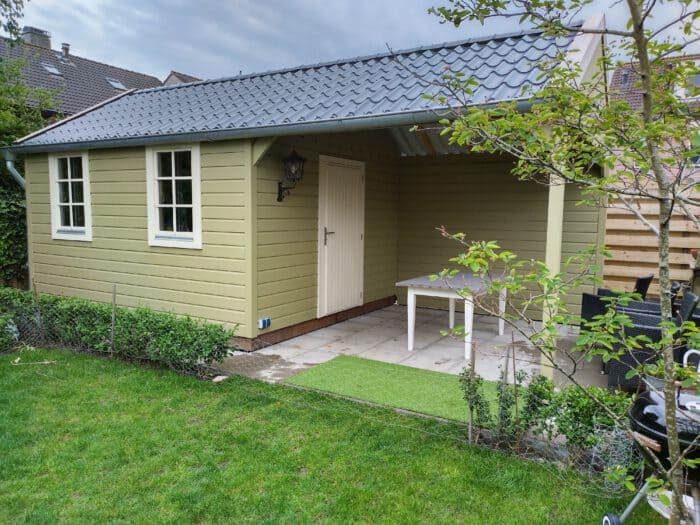
Want to see more pictures of other customers?
2. The right pre-treatment for painting treated wood
Impregnated wood is wood that has already been treated. Impregnation adds substances to the wood that make it more durable. Wood species that are naturally less durable are usually impregnated, such as Douglas fir and pine. A treatment such as impregnating the wood extends the lifetime of the wood.
Extensive pre-treatment is not necessary when painting with Moose Färg paint. It is mostly important that the substances sweat out before applying the second coat. If the wood is dirty or greasy, it is of course important to clean the wood beforehand. This can be done with soapy water made of eco-friendly soap Polarsken. Is the wood new and smooth? Then sand it well with a coarse grit (P80) before painting.
3. Painting treated wood on both sides
Impregnated wood often has a relatively open structure and is susceptible to water penetration. With ‘traditional’ paint, the wood is locked up and water, air and dirt are likely to build up between the wood and the paint. The result? Your paint starts to flake.
Moose Färg is perfectly suitable for painting treated wood on both sides due to its vapour-open character. It gives you extra protection on the inside and it gives a pleasant appearance. Definitely a go!
Order wood paint for treated wood?
4. Wood treatment types
There are several ways to preserve and impregnate wood. Well-known is the so-called wolmanizing, which impregnates the wood with a solution containing a.o.t. copper. Wolmanizing is used a lot in outdoor applications, such as for fences, decking and garden sheds. It causes the wood to turn green because of the copper salt used. Wolmanized wood is well suited for painting with Moose Färg.
Another method is to use impregnating agents that are applied to the wood. These types of impregnations are applied to the wood and soak into it. We offer such an impregnation agent ourselves: transparent Storuman Skydd. It is important that the impregnating agents do not form a coat on top of the wood. If it does not, you can simply paint over with our paint (after degreasing the wood).
Thermotreating is not an impregnation, but a preservation method. This involves heating the wood strongly in an autoclave and hardening it internally. Actually, it is ‘baked wood’. Moose Färg is very suitable for this type of wood, provided it is properly degreased. After thermotreating, oily substances seep out of the wood, which must first be removed well with e.g. linseed oil soap Polarsken.
5. What paint should I use for my impregnated or treated wood?
Are you going to paint treated wood? We strongly recommend that you choose a paint that allows the wood to exchange moisture with its environment. That means: a paint that does not put a covering film on top of the wood like lacquer paint does. If you choose one of Moose Färg’s beautiful matt colours, make sure to use paint type Moose F. This paint type is very well suited for many types of treated wood, such as Douglas, spruce and pine.
Doubts about the colour? Request our free colour card
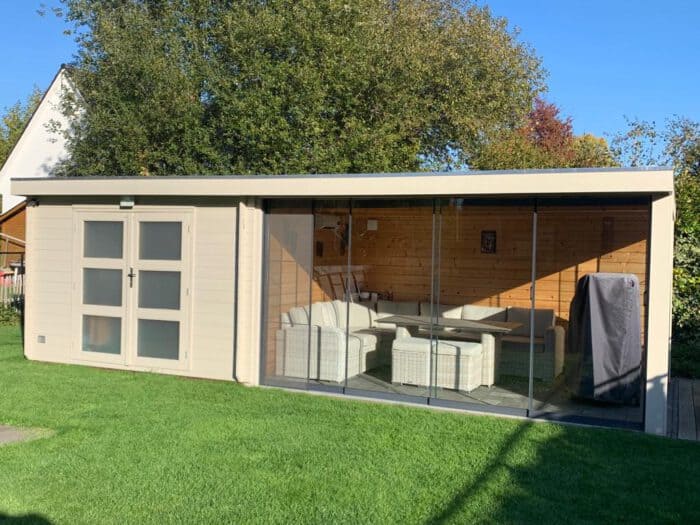
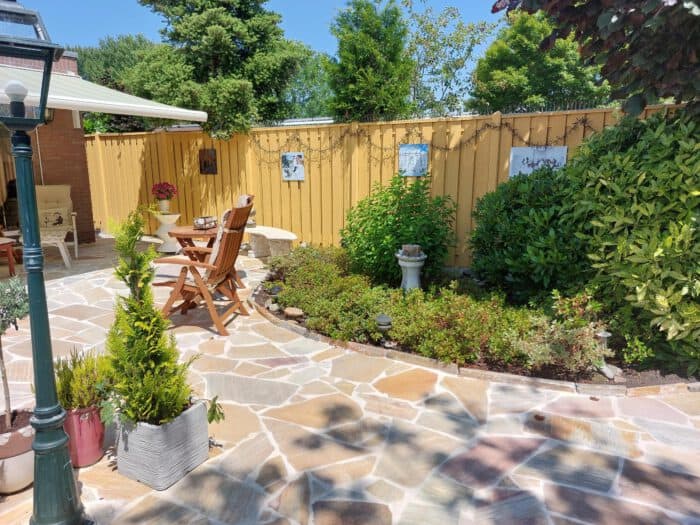
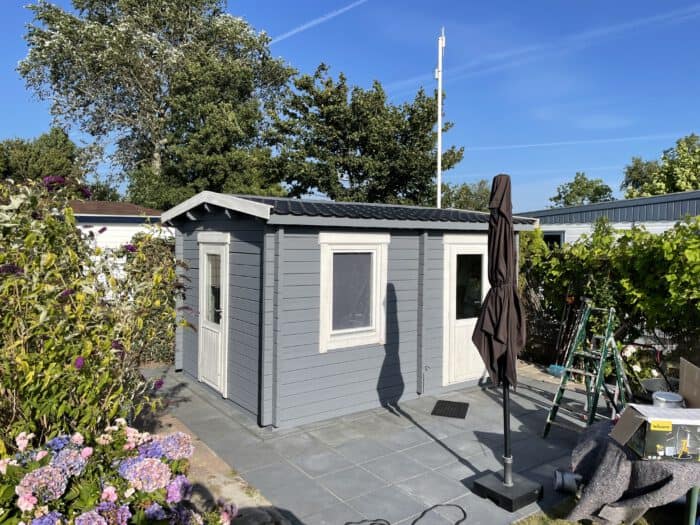
How to paint treated wood with Moose Färg?
A step-by-step brief plan
- Let the wood “sweat” for a while or make sure to degrease well before the first coat
Impregnating salts can cause a reduced adhesion. After a few months, the impregnation salts have disappeared from the wood. If you want to paint before that, make sure to degrease well and apply one coat. The second coat should be applied a few months later.
- Sand smooth planed wood
Use a coarse grit (P80) to make the wood more receptive to the paint. For rough sawn or rougher wood, sanding is not necessary.
- Use wood paint type Moose F for your treated wood.
A 4-litre bucket of Moose F covers approx. 20 m² (two layers). Applying a primer is not necessary, you can paint directly on the wood. Two layers are usually enough for a full covering effect. Sometimes a third layer is necessary for lighter colours such as white or yellow. Moose F is in stock in all colours. Delivery will take up about 3 – 4 working days after payment, depending on your shipping location.
Want to paint impregnated wood?
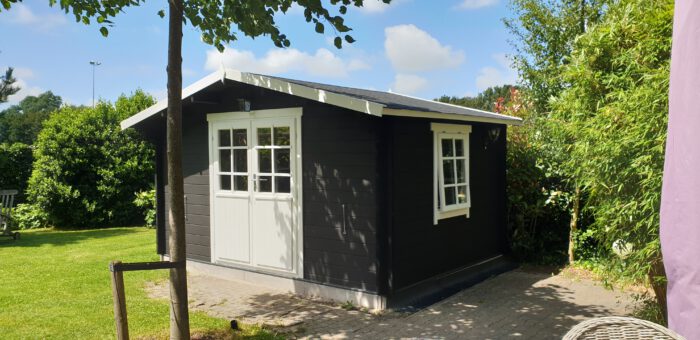
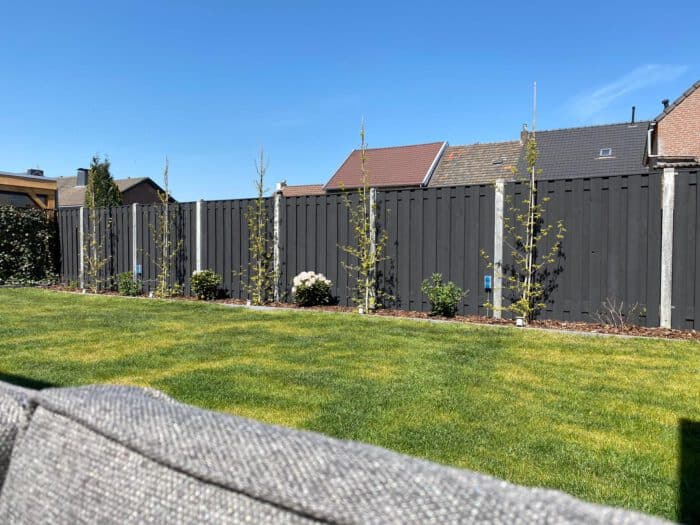
Choose your color for treated wood
You can paint your impregnated wood in 19 beautiful Swedish colours. The colours have a totally matt appearance and do not reflect light. As a result, your garden will have a calm appearance.
How to choose the right colour for your project?
- Computer settings strongly influence the way the colours look. Take a look at the photos of other projects for a good representation of the colour in different light.
- Make sure to request our free, hand-painted colour chart which lists all of our standard colours.
- If you want to test the color on your own lumber, order a paint sample first.
Is your desired colour not in our standard colour palette? It is also possible to choose a customised color specifying a RAL or NCS code.
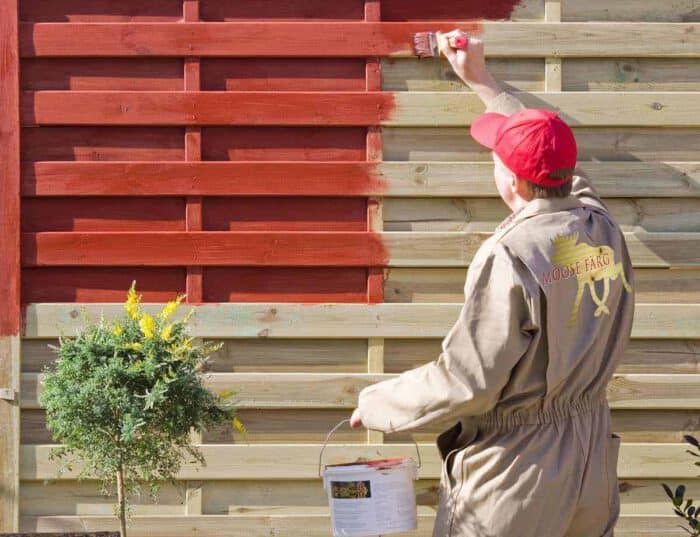
Painting or staining treated wood?
Frequently asked questions about painting treated wood
Freshly impregnated lumber is best left for a while to allow it to shrink, expand and “sweat” out the impregnation. Think of a few months to a year. It is not a bad idea at all to wait a year before painting.
In the meantime, absolutely do not use paint or varnish that completely seals the wood. If you do so, the wood can no longer release the impregnating agents. As a result, you will get stains or the paint will start to flake.
The advantage of breathable Moose F paint is that it absorbs into the wood. If preferred, it allows you to apply the first coat to the impregnated wood right away. Ideal if you want to give your impregnated garden shed or fence an immediate layer of colour. With Moose F paint, salts and excess moisture can penetrate through the first layer. Wait with the second coat until the treated wood has “sweated” out.
Yes, you can paint impregnated wood, but it is a good idea to choose a paint that is vapour-permeable. This allows the salts and excess moisture from the wood to still soak through the first coat and prevents staining or flaking.
No, when you paint with Moose F wood paint, you do not need a primer. In fact, it is not recommended.
A water-based, vapour-open stain or paint is best for painting treated wood. Stains with a breathable, open structure allow the impregnating agent to “sweat” out of the wood. This allows salts and moisture to be released to the air through the paint layer. This has the great advantage of preventing the paint from flaking.
Choose Moose F if you want to paint the wood opaque. Choose Dimma wash if you want a semi-transparent paint. Touching up the paint layer is very easy with these paint types. Does the impregnation cause stains? Then you can easily apply a new layer without sanding (just clean), so that your fence or garden house looks great again.
Would you like additional, personal advice?
We are happy to help. Send an e-mail or call +31(0) 6 55 333 165. Watch our Instruction Video for more information. Apply here for a free color-card.












